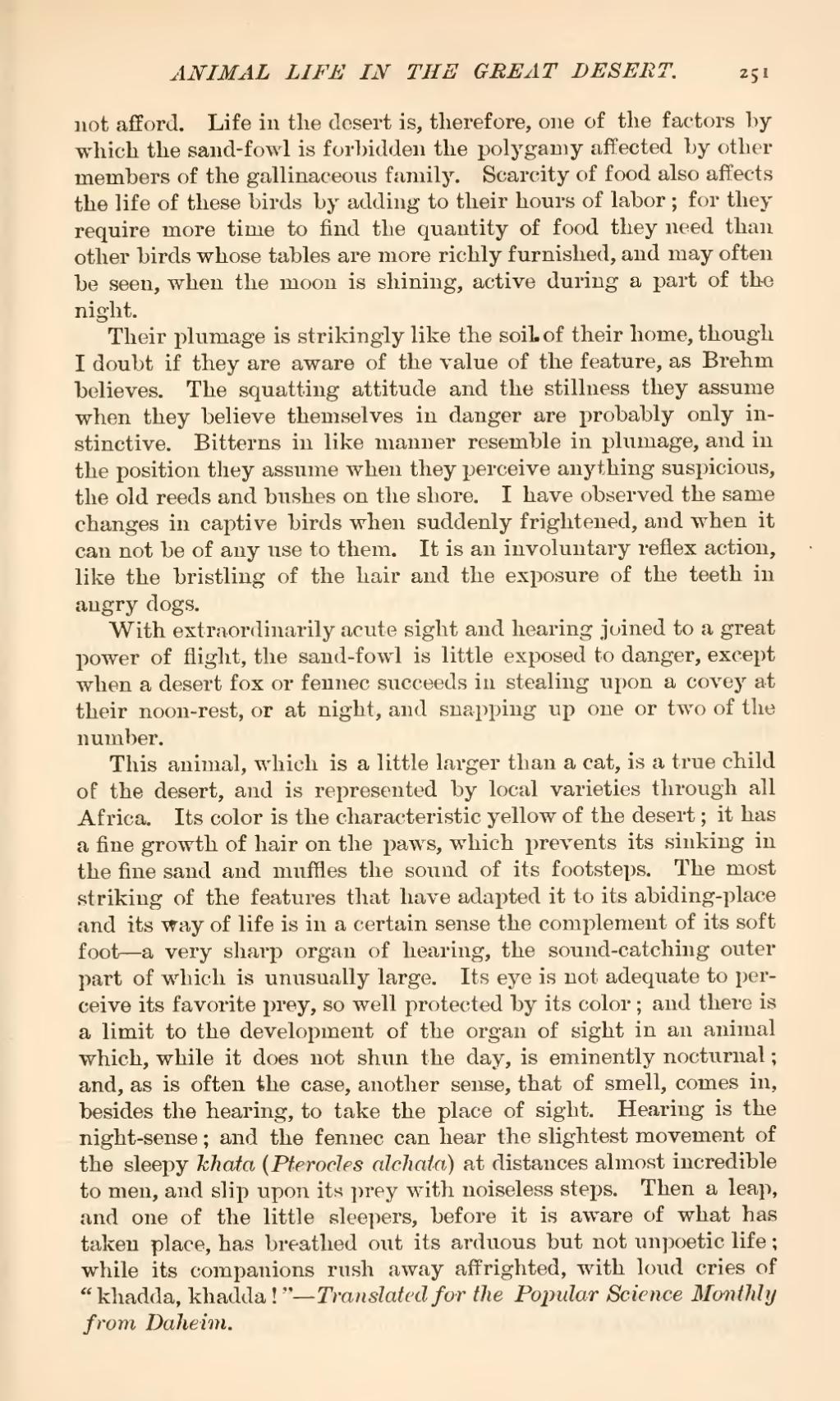not afford. Life in the desert is, therefore, one of the factors by which the sand-fowl is forbidden the polygamy affected by other members of the gallinaceous family. Scarcity of food also affects the life of these birds by adding to their hours of labor; for they require more time to find the quantity of food they need than other birds whose tables are more richly furnished, and may often be seen, when the moon is shining, active during a part of the night.
Their plumage is strikingly like the soil of their home, though I doubt if they are aware of the value of the feature, as Brehm believes. The squatting attitude and the stillness they assume when they believe themselves in danger are probably only instinctive. Bitterns in like manner resemble in plumage, and in the position they assume when they perceive anything suspicious, the old reeds and bushes on the shore. I have observed the same changes in captive birds when suddenly frightened, and when it can not be of any use to them. It is an involuntary reflex action, like the bristling of the hair and the exposure of the teeth in angry dogs.
With extraordinarily acute sight and hearing joined to a great power of flight, the sand-fowl is little exposed to danger, except when a desert fox or fennec succeeds in stealing upon a covey at their noon-rest, or at night, and snapping up one or two of the number.
This animal, which is a little larger than a cat, is a true child of the desert, and is represented by local varieties through all Africa. Its color is the characteristic yellow of the desert; it has a fine growth of hair on the paws, which prevents its sinking in the fine sand and muffles the sound of its footsteps. The most striking of the features that have adapted it to its abiding-place and its way of life is in a certain sense the complement of its soft foot—a very sharp organ of hearing, the sound-catching outer part of which is unusually large. Its eye is not adequate to perceive its favorite prey, so well protected by its color; and there is a limit to the development of the organ of sight in an animal which, while it does not shun the day, is eminently nocturnal; and, as is often the case, another sense, that of smell, comes in, besides the hearing, to take the place of sight. Hearing is the night-sense; and the fennec can hear the slightest movement of the sleepy khata (Pterocles alchata) at distances almost incredible to men, and slip upon its prey with noiseless steps. Then a leap, and one of the little sleepers, before it is aware of what has taken place, has breathed out its arduous but not unpoetic life; while its companions rush away affrighted, with loud cries of "khadda, khadda!"—Translated for the Popular Science Monthly from Daheim.
